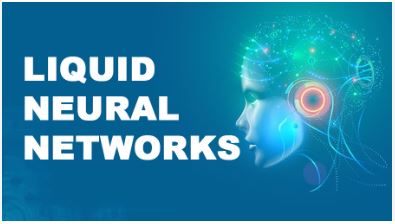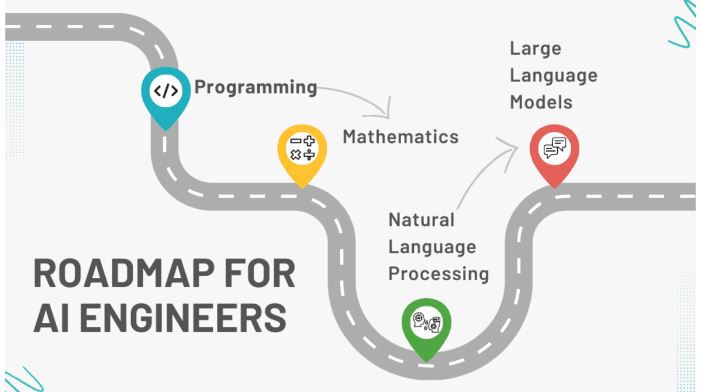10 Popular Machine Learning Algorithms to Know in 2023
Author: neptune | 11th-Sep-2023
Learn about 10 machine learning algorithms that are dominating the field in 2023
In the ever-evolving landscape of the IT industry, machine learning has become a prevalent buzzword. Its application extends to various everyday scenarios, from Amazon's product recommendations based on your previous purchases to suggesting related films after you've watched videos in a particular genre. These examples, among many others, showcase the extensive utility of machine learning.
Amidst this dynamic era, a diverse array of machine learning algorithms has emerged to tackle complex real-world challenges. In this article, we will delve into 10 widely recognized machine learning algorithms and explore the various learning techniques employed to harness their potential, transforming them into valuable machine learning models.
1. Linear Regression:
Linear regression is a robust statistical technique used for predicting continuous data outcomes. It operates by modelling the connection between a single response variable and one or more explanatory factors. When there's only one explanatory variable, it's called simple linear regression. In cases where multiple variables collectively influence the response, the more intricate multiple linear regression comes into play.
2. Logistic Regression:
Logistic regression is ideal for classification tasks. It estimates the probability of a binary outcome and is widely used in various domains, such as healthcare for disease diagnosis and marketing for customer churn prediction.
3. Decision Trees:
Decision trees are intuitive, interpretable models used for classification and regression. They break down complex decision-making processes into a series of simple questions and are the basis for more sophisticated algorithms like random forests and gradient boosting.
4. Random Forest:
Random Forest is an ensemble learning method that combines multiple decision trees to improve prediction accuracy. It's robust, handles high-dimensional data well, and is widely used in applications like image classification and finance.
5. K-Nearest Neighbors (KNN):
K-Nearest Neighbors is a simple yet effective algorithm for classification and regression. It makes predictions based on the majority class or average of the k-nearest data points in the feature space. KNN is often used in recommendation systems and anomaly detection.
6. Support Vector Machines (SVM):
SVM is a powerful algorithm for both classification and regression tasks. It finds the optimal hyperplane that best separates data points into different classes while maximising the margin between them. SVM is useful in fields like image classification and bioinformatics.
7. Naive Bayes:
Naive Bayes is a probabilistic algorithm based on Bayes' theorem. It's commonly used for text classification and spam detection. Despite its simplicity and "naive" assumptions, Naive Bayes often performs surprisingly well in practice.
8. Gradient Boosting and AdaBoost:
Gradient Boosting and AdaBoost are ensemble learning techniques that combine the predictions of multiple weak learners to create a strong learner. They are known for their high predictive accuracy and are widely used in Kaggle competitions and real-world applications.
9. Convolutional Neural Networks (CNNs):
CNNs are deep learning models designed for processing grid-like data, such as images and video. They use convolutional layers to automatically extract relevant features from the input data and have revolutionised computer vision tasks like object detection and image classification.
10. Recurrent Neural Networks (RNNs):
RNNs are specialised deep learning models for sequential data. They are equipped with memory cells that allow them to capture temporal dependencies in data. RNNs are crucial in natural language processing for tasks like language generation, machine translation, and sentiment analysis.
Conclusion
These ten machine learning algorithms are essential tools for data scientists and machine learning practitioners in 2023. Understanding their strengths and weaknesses can empower you to choose the right algorithm for your specific problem and make more accurate predictions.
#JavaScript #AI #Python #Hackerrank #Motivation #React.js #Interview #Testing #SQL #Selenium #IT #LeetCode #Machine learning #Problem Solving #AWS #API #Java #GPT #TCS #Algorithms #Certifications #Github #Projects #Jobs #Django #Microservice #Node.js #Google #Story #Pip #Data Science #Postman #Health #Twitter #Elon Musk #ML
 PaLM 2: Google's Multilingual, Reasoning, and Coding Model
PaLM 2: Google's Multilingual, Reasoning, and Coding ModelAuthor: neptune | 13th-May-2023
#Machine learning #AI #Google
Google introduces PaLM 2, a highly versatile language model with improved multilingual, reasoning, and coding capabilities powering over 25 Google products and features...
 Comparing Chat GPT and Google Bard: Differences and Applications
Comparing Chat GPT and Google Bard: Differences and ApplicationsAuthor: neptune | 17th-Jun-2023
#Machine learning #AI #Google #GPT
Chat GPT and Google Bard are two of the most popular language models that have been developed in recent years. Both of these models are designed to generate human-like responses to text-based inputs...
 7 Open Source Models From OpenAI
7 Open Source Models From OpenAIAuthor: neptune | 11th-May-2023
#Machine learning #AI
Elon Musk criticized OpenAI for becoming a closed source, profit-driven company. Despite this, OpenAI has released seven open source models, including CLIP and Dall-E...
 The Godfather of AI Sounds the Alarm: Why Geoffrey Hinton Quit Google?
The Godfather of AI Sounds the Alarm: Why Geoffrey Hinton Quit Google?Author: neptune | 09th-May-2023
#Machine learning #AI
Geoffrey Hinton, the Godfather of AI, has quit Google and warned of the danger of AI, particularly the next generation AI language model, GPT-4...
 Google Bard: A Chatbot That Generates Poetry
Google Bard: A Chatbot That Generates PoetryAuthor: neptune | 26th-Mar-2023
#Machine learning #AI #Google
Google has recently launched a new AI tool called Google Bard, which is a chatbot that can generate poetry. The chatbot is available to anyone with an internet connection, and it is free to use...
 Liquid AI: Redesigning the Neural Network Landscape
Liquid AI: Redesigning the Neural Network LandscapeAuthor: neptune | 26th-Oct-2024
#Machine learning #AI
As AI continues to evolve, Liquid AI, an MIT spinoff, is reimagining neural networks with its innovative approach, liquid neural networks...
 Roadmap for AI Engineers: 10 Easy Steps to Become an AI Engineer
Roadmap for AI Engineers: 10 Easy Steps to Become an AI EngineerAuthor: neptune | 22nd-Oct-2024
#Machine learning #AI
AI is transforming industries worldwide, & the demand for AI engineers has surged as companies look to incorporate ML and data-driven decisions into their operations...
View More